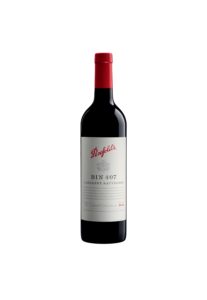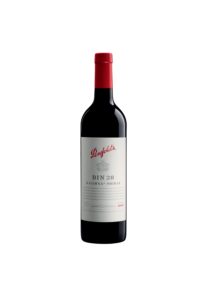Sam Stephens, Winemaking Ambassador, Penfolds
Penfolds’ is among the world’s best winemakers. Their wines are imported to several countries, including the US. Sam Stephens, the brand’s Winemaking Ambassador, travels the world to introduce the 174-year-old estate to people beyond Australia. He was in Mumbai to launch Penfolds, in association with Brindco, over a series of high-profile soirees and wine dinners. The WSET diploma holder, who recently completed the first level of Masters of Wines studies tells Luxury Next about estate’s heritage and its many wines.
Penfolds is among the oldest wine estates in Australia. What was its heritage and how much have the wines changed over the years?
We have a 174-year-old history and the wines we serve today are still influenced by the wines that were introduced in Australia way back then. Dr Penfold, born in a family of a vicar, was a medical doctor, who emigrated to the southern part of Australia from England. Back home, he lived in a house next to the hermitage, which was also called Grange, and learnt how to make fortified wine.
Grange is also the name of the family’s cottage in Australia, and our flagship label is the Penfolds Grange. The cottage is now a museum and we have preserved Dr Penfold’s old medicine bag and the little bottles that he used to dispense tonic in. The tonic was actually fortified wine, and the demand for it far outstripped the supply. This is where he saw a huge opportunity to turn the wine into a commercial proposition.
Penfolds Bin 407, Cabernet Sauvignon
He carried vine cuttings with him to Australia. Where were they from?
Dr Christopher and Mary Penfold had carried the vine cuttings largely from the south of France to Australia. The vineyard was established in 1844 and their early forays were into Clarets and Rieslings. It was Mary Penfold, in fact, who oversaw the running of the vineyard for the first 30 years. We have a wonderful trophy in our museum that Mary received for a dry white wine of light character, in the late 1800s. However, for the first 100 years, the Penfolds portfolio was pretty much dominated by that for two major reasons. Australians loved the strong, sweet wine. Also, delicate dry wine would not have survived for eight weeks on the back of a cart while being transported, in extreme heat, to Melbourne and Sydney (our big markets). But fortified wine was perfect; it almost improved on the journey.
What was the first batch of wine like?
The first batch was of fortified tonic and the first 100 years of Penfolds was pretty much dominated by that for two major reasons. First that is what the Australians drank, a strong sweet alcoholic wine. But also because when you were transporting these wines in the extreme heat of Australia, delicate dry wine doesn’t survive for more than eight weeks on the back of a cart, on the way to Melbourne or Sydney. But fortified tonic wine was perfect; it almost improved on the journey up and of course, and Melbourne and Sydney were huge markets for Penfolds.
How would you export wine in those times?
On ships going to the US, carried in a couple of barrels. We have historical records of selling wine back to the homelands.
Penfolds Mumbai launch party – Aman Dhall, Rahul Singh, Reva K. Singh with friends
Max Schubert probably contributed quite a lot to Penfold’s legacy as one of Australia’s best vineyards. Don’t you have wines dedicated to his legacy even today?
Sir Max joined the winery in 1931, at the age of 16, as a messenger boy. In a wonderful old interview, he said, “If there was any work to do around the winery, especially dirty jobs, somebody would shout ‘boy’, and I would come running.” Seventeen years later, he was made our chief of production and our first chief winemaker. He gave Penfolds some of their best flagship wines.
One of recent releases was from Max’s portfolio. Can you tell us something about that wine?
The idea behind these wines was to pay homage to Max and his legacy. He was a very influential person in the wine business in Australia, because of how he broke the mold with the wines he made, from Grange to Bin 28 and Bin 389.
How has the wines Penfolds makes changed over the years?
We have made a shift towards fruit wines and they are perfect for the millennials. It is for people who are just starting their wine journey or their adventure with wine.
Australia witnessed the influx of people from different heritage and cultures who brought in their wine culture. How did that influence a vineyard like Penfolds?
We absorbed a lot of the wine culture that was brought in by people from across the world, but especially from Europe. Over the last 170 years, we’ve been able to acquire huge swathes of quality vineyard land. We’re fortunate to own Cabernet Sauvignon vines that are over 136-years-old. Over the last 170 years we have been able to acquire huge swathes of high quality vineyard land. In the 1900s, in fact, the Germans and European immigrants brought with them their local wines, which also influenced the Australian wine making culture. In fact, we wouldn’t be anywhere without them. We have three different Rieslings in our portfolio, dating back 70-80 years, from the Eden Valley vineyards, which is in the heartland of German settlements.
Penfolds Bin 28 Kalimna Shiraz
What is Penfolds portfolio like?
We have around 30 commercial labels. The foremost is the entry-level Koonunga Hill, with a range of Chardonnay, a Riesling and Shiraz Cabernet. Then there is the Bin range, which is at the core of our flagship wines. And in this you have Cabernet Shiraz and Cabernet Sauvignon.
The Max’s range, dedicated to our foremost winemaker, has a Shiraz, Shiraz Cabernet, Cabernet Sauvignon, and even a Chardonnay. The limited edition range includes a Bin 620 Coonawarra Cabernet Shiraz and a Bin 60A Coonawarra Barossa Valley Cabernet Sauvignon Shiraz.
Bin 389 Cabernet Shiraz and the Grange Hermitage are the ultimate legends, not just in Australia but across the world. Max worked on Grange Hermitage in secret for three years. He travelled extensively through Boudreaux region in France, and on returning to Australia, tried to create a wine that would match the French wines in their ability to age. The Grange did not receive the expected welcome when it was first released in 1952, and by 1957 he was ordered by Penfolds management to halt production. However the 1957, 1958 and 1959 vintages of Grange were still made by Max, in secret, with the backing of Jeffrey Penfold, who turned a blind eye to his experiments. Max hid the vintages behind walls in the winery!
The 1955 vintage of Grange Hermitage have been part of wine competitions since 1962, and over the years has won more than 50 gold medals. The 1971 vintage won first prize in Shiraz at the Parisian Wine Olympics, while the 1990 vintage was named “Red Wine of the Year” by the Wine Spectator magazine in 1995. Grange is a wine that needs to be matured for a longer time so that it settles down well enough. We only release four-and-a-half year old vintages, but a good vintage’s drinking window extends to 60 years.
Penfolds Mumbai launch party, Madhulika and Keya Balasundaram
Does a bottle of the 1955 vintage exists today?
We have some in our museums, and there are several collectors in Australia that have bottles of these old wines from the 1950s. In fact, we have a recorking service where people with 15 years and beyond vintage red wines, can come for recorking their bottles. We top the bottle up with the current vintage of the same wine. Many collectors have brought in wines from the 1920, 20 and 40 vintages to this recorking clinic. The Grange 1951 vintage is the most expensive Australian wine and one recently went at auction for nearly $40,000.







